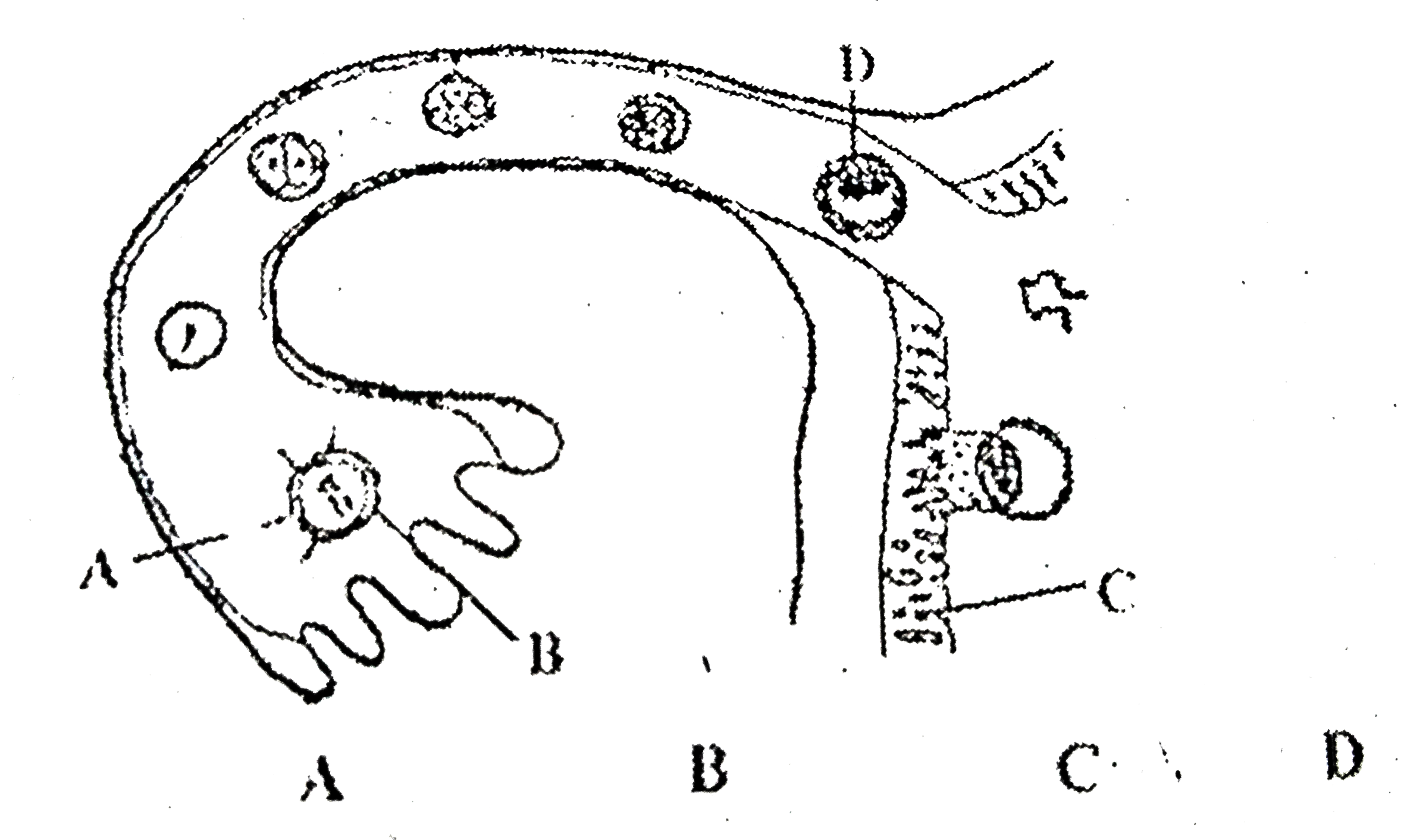If A is wrapped around B and and the resultant C is produced , then A ,B,C represents,?
ABCRNAH1 histone Non - histone protein
ABCDNAHistone octamer nucleosome
ABCDNAHistone octamerH1 histone
ABCDNAH1 histoneH1 Histone tetramer
The correct Answer is:B
To solve the question, "If A is wrapped around B and the resultant C is produced, then A, B, and C represent what?", we can break it down step by step:
1. Identify A, B, and C:
- In the context of DNA packaging, we can identify:
- A as DNA.
- B as histone proteins.
- C as nucleosomes.
2. Understand the Role of Histones:
- Histones are basic proteins that play a crucial role in the packaging of DNA in eukaryotic cells. They are rich in amino acids such as lysine and arginine, which are positively charged.
3. Interaction Between DNA and Histones:
- DNA is negatively charged and slightly acidic. The positive charge of histones attracts the negatively charged DNA, allowing them to bind together.
4. Formation of Nucleosomes:
- When DNA wraps around a histone octamer (which consists of 8 histone proteins), it forms a structure called a nucleosome. This nucleosome is the fundamental unit of chromatin.
5. Structure of Chromatin:
- The nucleosomes are connected by linker DNA, creating a "beads on a string" appearance when viewed under an electron microscope. Each bead represents a nucleosome, and the string represents the linker DNA.
6. Conclusion:
- Therefore, in this context:
- A (DNA) is wrapped around B (histone proteins) to produce C (nucleosomes).
Final Answer:
- A = DNA
- B = Histone proteins
- C = Nucleosomes
- In the context of DNA packaging, we can identify:
- A as DNA.
- B as histone proteins.
- C as nucleosomes.
- Histones are basic proteins that play a crucial role in the packaging of DNA in eukaryotic cells. They are rich in amino acids such as lysine and arginine, which are positively charged.
- DNA is negatively charged and slightly acidic. The positive charge of histones attracts the negatively charged DNA, allowing them to bind together.
- When DNA wraps around a histone octamer (which consists of 8 histone proteins), it forms a structure called a nucleosome. This nucleosome is the fundamental unit of chromatin.
- The nucleosomes are connected by linker DNA, creating a "beads on a string" appearance when viewed under an electron microscope. Each bead represents a nucleosome, and the string represents the linker DNA.
- Therefore, in this context:
- A (DNA) is wrapped around B (histone proteins) to produce C (nucleosomes).
- A = DNA
- B = Histone proteins
- C = Nucleosomes
Similar Questions
DNA is wrapped around the histone octamer to form
View SolutionWhat do A, B, C and D represent?
 View Solution
View SolutionWhat do A, B ,C and D represent ?
 View Solution
View SolutionABCD is a parallelogram. AD is a produced to E so that DE=DC and EC produced meets AB produced in F. Prove that BF=BC.
View SolutionABCD is a parallelogram. AD is a produced to E so that DE=DC and EC produced meets AB produced in F. Prove that BF=BC.
View SolutionIf D is any point on the base BC produced, of an isosceles triangle ABC, prove that AD>AB .
View SolutionIf D is any point on the base BC produced, of an isosceles triangle ABC , prove that AD>AB.
View SolutionIn Figure, ABCD is a trapezium in which AB∣∣DC. DC is produced to E such that CE=AB, prove that ar(△ABD)=ar(△BCE). Construction: Draw DM on BA produced and BN⊥DC
View SolutionIn Figure, ABCD is a quadrilateral and BE∣AC and also BE meets DC produced at E. Show that area of ADE is equal to the area of the quadrilateral ABCD
View SolutionIf →a,→b are the position vectors of A,B respectively, find the position vector of a point C in AB produced such that AC=3AB and that a point D in BA produced such that BD=2BA .
View Solution

